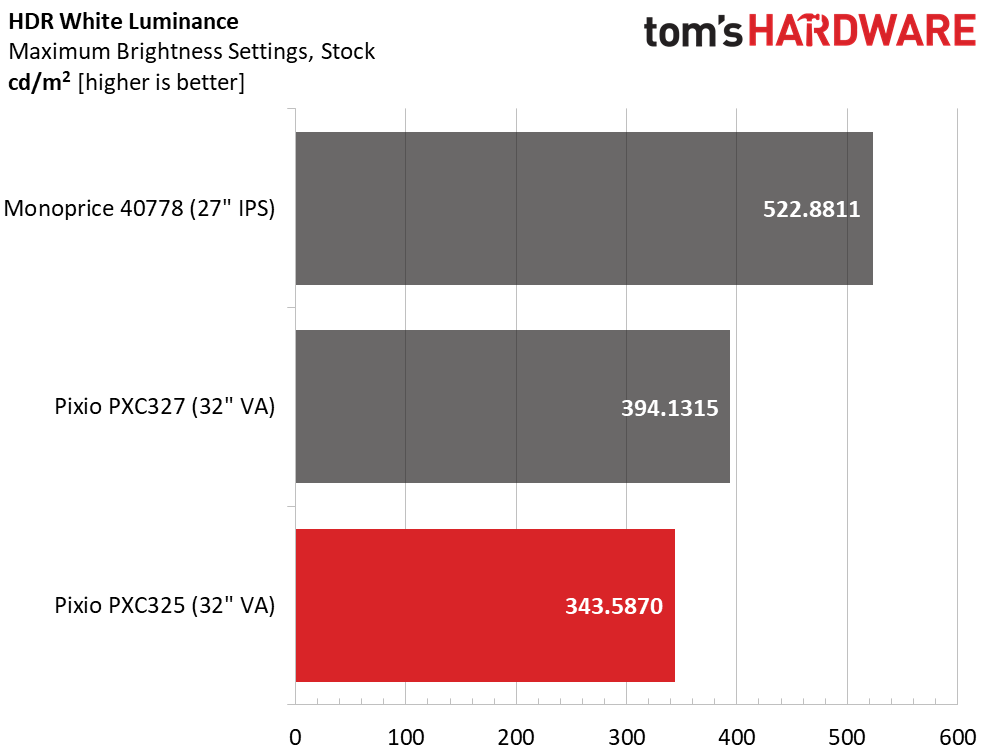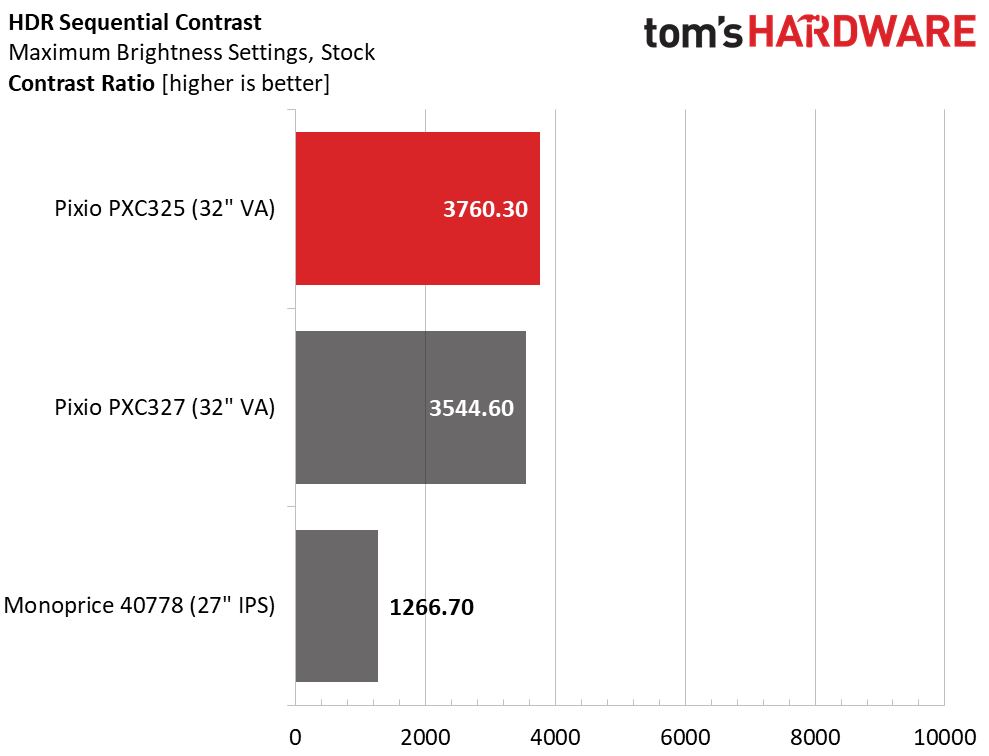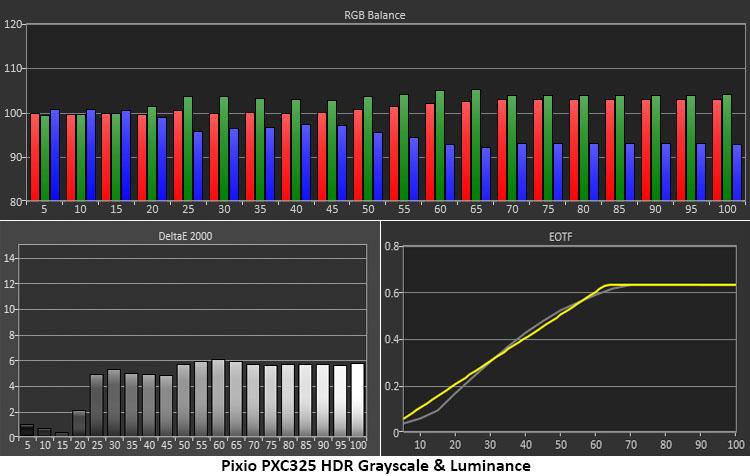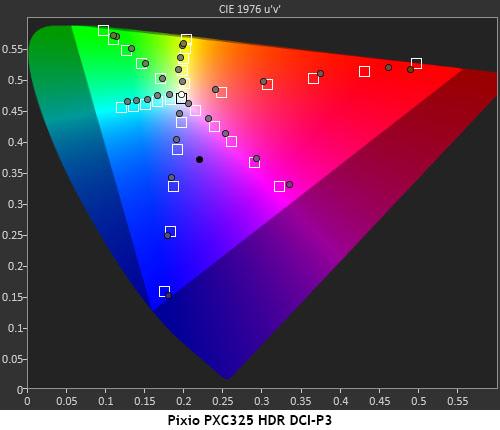Why you can trust Tom's Hardware
Our HDR benchmarking uses Portrait Displays’ Calman software. To learn about our HDR testing, see our breakdown of how we test PC monitors.
Though the PXC325 supports HDR, it’s something of a process to engage it. You must turn it on in the OSD before engaging HDR in Windows or a game. There is no automatic switchover, which is not unusual in the value category.
HDR Brightness & Contrast



The PXC325’s peak light output is about the same for SDR and HDR. The black level is slightly higher, which means contrast is lower for HDR than SDR. The difference isn’t huge, but, unfortunately, there is no menu option to extend dynamic range. HDR looks a bit different because the luminance curve is altered, but it doesn’t look any better. The PXC325 supports HDR just fine, but it doesn’t enhance the image.
Grayscale, EOTF and Color


There are no image controls available in HDR mode, so no calibration is possible. There are slight red/green errors visible from 25% brightness and higher. This only has a minor impact on content. Since the PXC325’s EOTF tracking is close to standard, there is no loss of detail or sharpness.
Color performance is better, with only slight undersaturation seen in the primary colors. The measurements are close to their targets, so it’s hard to see a problem in actual content. Again, the PXC325 supports HDR but using it offers no benefit.
Get Tom's Hardware's best news and in-depth reviews, straight to your inbox.

Christian Eberle is a Contributing Editor for Tom's Hardware US. He's a veteran reviewer of A/V equipment, specializing in monitors. Christian began his obsession with tech when he built his first PC in 1991, a 286 running DOS 3.0 at a blazing 12MHz. In 2006, he undertook training from the Imaging Science Foundation in video calibration and testing and thus started a passion for precise imaging that persists to this day. He is also a professional musician with a degree from the New England Conservatory as a classical bassoonist which he used to good effect as a performer with the West Point Army Band from 1987 to 2013. He enjoys watching movies and listening to high-end audio in his custom-built home theater and can be seen riding trails near his home on a race-ready ICE VTX recumbent trike. Christian enjoys the endless summer in Florida where he lives with his wife and Chihuahua and plays with orchestras around the state.